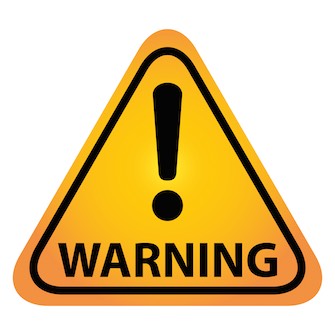Maintaining low-quality patents isn’t a winning strategy
Getting whatever you can sneak by a patent examiner probably never was a wise strategy, but it is true that there was a time in the industry when patents were viewed as a numbers game. Once upon a time, the patent business viewed patent acquisition, whether by organic growth or outside purchase, as aking to a corporate version of global thermonuclear war. If you want to succeed, the thinking went, you needed to have more warheads (i.e., patents) than your enemies. At times, the quality of those patent assets were considered at best secondary, if not completely irrelevant.
While the size of a patent portfolio isn’t completely irrelevant, it is worse than useless to have a portfolio full of low-quality patents. Not only is there a growing cost associated with obtaining patents in the first place, but there is also a growing cost of keeping patents alive. The seldom told story in the popular press is that many patents do not enjoy the full patent term because there are three separate and increasing maintenance fee payments that must be made to keep the patent alive for its full term. Specifically, maintenance fees are due at 3.5, 7.5 and 11.5 years after a patent has issued. For a large entity, these fees are $1,600 for the first maintenance fee payment, $3,600 for the second, and $7,400 for the third.
Alice Experts and the Return of Second Pair of Eyes to the PTO
 “I have not yet run into an Art Unit that does not have someone designated as an Alice expert,” explained JiNan Glasgow of Neopatents. “They won’t always tell you who it is, but they all say they have an Alice expert.”
“I have not yet run into an Art Unit that does not have someone designated as an Alice expert,” explained JiNan Glasgow of Neopatents. “They won’t always tell you who it is, but they all say they have an Alice expert.”
While discussing the importance of doing interviews in every single case, Glasgow explained that although it is not something that has been generally publicly disclosed by the Patent Office, “in every art unit examiners confirm that there is an examiner within the Art Unit who is the Alice expert and that examiners have said that even if they are ready to allow a case, nothing can be allowed without the approval of that Alice expert.” This applies to TC 3600 and beyond, according to Glasgow.
If what examiner after examiner has told Glasgow is correct, this means there is essentially a return to the so-called “second pair of eyes” review at the Patent Office.
08.18.16 | patent eligibility, Patent Issues, Patent Prosecution, USPTO | Gene Quinn
Getting to a patent as fast as possible
 Patent attorney Russ Krajec is the CEO and founder of BlueIron, a patent-financing company. Krajec is an angel investor, a registered patent attorney, a former Chief Operating Officer of a venture-backed startup company, and an inventor on more than 30 US patents and applications. Russ started BlueIron because he was frustrated with what he perceives to be a conflict of interest between clients, particularly startups, and patent attorneys.
Patent attorney Russ Krajec is the CEO and founder of BlueIron, a patent-financing company. Krajec is an angel investor, a registered patent attorney, a former Chief Operating Officer of a venture-backed startup company, and an inventor on more than 30 US patents and applications. Russ started BlueIron because he was frustrated with what he perceives to be a conflict of interest between clients, particularly startups, and patent attorneys.
Every patent attorney knows the problems. We know what the client really should be doing, but the client either doesn’t want to pay for the proper solutions, or cannot afford the proper representation. Wouldn’t it be nice if you could just do what is in the best interest of building the best, strongest patent portfolio possible without having to justify every dime to the client? Enter BlueIron. If you are a startup company and you have patentable technology, rather than calling an angel, you might want to consider calling Krajec, who offers free legal work in exchange for the rights to the patent which he then licenses back to the inventors. The inventors also retain an option to purchase the patent back at any time. The model is much cheaper than angel or VC financing.
07.22.16 | Interviews, Patent Issues, Patent Prosecution | Gene Quinn
USPTO announces Post-Prosecution Pilot Program
 Earlier this month, the United States Patent and Trademark Office published a Notice in the Federal Register announcing a new pilot program for applications that have received a final rejection. The Post-Prosecution Pilot Program will run from July 11, 2016, through January 12, 2017, or until the Patent Office has accepted a total of 1,600 compliant requests, whichever occurs first.
Earlier this month, the United States Patent and Trademark Office published a Notice in the Federal Register announcing a new pilot program for applications that have received a final rejection. The Post-Prosecution Pilot Program will run from July 11, 2016, through January 12, 2017, or until the Patent Office has accepted a total of 1,600 compliant requests, whichever occurs first.
According to the Patent Office, this Post-Prosecution Pilot Program responds to stakeholder input gathered during public forums held in support of the Enhanced Patent Quality Initiative. The goal is to provide another opportunity for applicants and examiners to attempt to resolve disputes without requiring an appeal or the filing of a Request for Continued Examination (RCE).
07.21.16 | Patent Issues, Patent Prosecution, USPTO | Gene Quinn
Relative Terminology: Like, just don’t use it in the claims
 The use of relative terminology, which are short-hand terms that express a certain similarity, are quite common in everyday conversation, but present real and present dangers when used without serious deliberate thought and consideration in a patent application. The use of relative terminology is most seriously problematic in patent claims specifically. This is true because patent claims must particularly point out and distinctly claim the subject matter invented. See Distinctly identifying the invention in exact terms. Therefore, the use of relative terminology in patent claims comes with real risks that must not be taken lightly.
The use of relative terminology, which are short-hand terms that express a certain similarity, are quite common in everyday conversation, but present real and present dangers when used without serious deliberate thought and consideration in a patent application. The use of relative terminology is most seriously problematic in patent claims specifically. This is true because patent claims must particularly point out and distinctly claim the subject matter invented. See Distinctly identifying the invention in exact terms. Therefore, the use of relative terminology in patent claims comes with real risks that must not be taken lightly.
Relative terminology is problematic because certain words that you might want to use are not nearly as descriptive as you might think. The description you are providing by relying on relative terms can leave open the possibility of miscommunication and ambiguity. Ambiguity is the archenemy of patent drafters and must be avoided.
03.10.16 | Patent Applications, Patent Drafting, Patent Issues, Patent Prosecution | Gene Quinn


No Comments
11.28.16 | Patent Issues, Patent Prosecution, posts | Gene Quinn